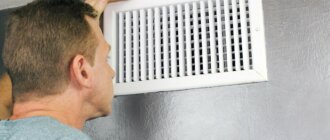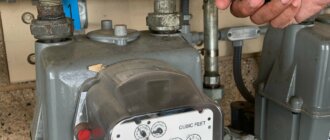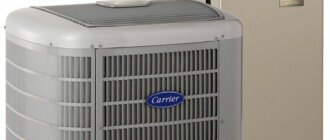The Future of Air Conditioning – New rules, New equipment
Are you ready for the future of air conditioning? With new rules and regulations, as well as technological advancements, the world of AC is rapidly evolving. The days of clunky units that waste energy are coming to an end, making way for a more efficient and sustainable approach to cooling. In this blog post, we’ll explore the changing landscape of air conditioning equipment and what it means for consumers. From new types of systems to benefits and challenges on the horizon, let’s dive into the exciting world of the future of air conditioning!
The Current State of Air Conditioning
Air conditioning has become an increasingly important aspect of modern living. In hot and humid climates, air conditioning is a necessity for many households and businesses to maintain a comfortable indoor environment. Currently, there are several types of air conditioning equipment available on the market, each with its own benefits and drawbacks.
The most common type of air conditioner is the split system, which consists of an outdoor unit that houses the compressor and condenser coil, connected to an indoor unit that contains the evaporator coil. This type of system provides both heating and cooling functions, making it versatile for year-round use.
Another popular option is central air conditioning, where cool air is distributed throughout a building via ductwork or vents. These systems are typically more expensive to install but can be more energy-efficient in larger spaces.
Window units are also commonly used in smaller rooms or apartments as they are easy to install and relatively inexpensive. However, they may not provide adequate cooling for larger areas or multiple rooms.
Despite the various options available today, energy efficiency remains a concern when it comes to operating air conditioners. Many newer models incorporate features such as programmable thermostats and high-efficiency compressors to help reduce energy consumption and costs over time. As technology advances further in this field, we can expect even more efficient solutions for cooling our homes and workplaces in the future.
Common Types of Equipment
When it comes to air conditioning, there are several types of equipment that are commonly used in both residential and commercial settings.
One of the most popular types is the central air conditioning system, which uses ducts to distribute cool air throughout a building. These systems typically consist of an outdoor unit that houses the compressor and condenser, as well as an indoor unit that houses the evaporator and blower.
Window air conditioners are another common type of equipment, particularly for smaller spaces or individual rooms. These units sit in a window frame and circulate cool air into the room while expelling hot air outside.
Portable air conditioners have also become increasingly popular in recent years, as they can be moved from room to room as needed. They work by extracting warm air from a space and circulating cool air back in.
There are also split-system AC units that consist of two separate components: an outdoor compressor/condenser unit and an indoor evaporator/blower unit. These systems do not use ductwork but instead rely on refrigerant lines to connect the two components.
Each type of equipment has its own unique advantages and disadvantages depending on factors such as space limitations, energy efficiency needs, cost considerations, and personal preferences.
Existing Regulations
When it comes to air conditioning, regulations exist at both the federal and state levels. These regulations are designed to ensure that equipment is safe, efficient, and environmentally friendly.
At the federal level, the Department of Energy sets minimum energy efficiency standards for air conditioners. This means that manufacturers must produce units that meet or exceed these standards to be sold in the United States.
State-level regulations may vary depending on where you live. Some states, such as California, have stricter energy efficiency requirements than others. In addition to energy efficiency standards, some states also require regular inspections of air conditioning systems to ensure they are operating safely.
In recent years, there has been a push towards more environmentally-friendly refrigerants due to concerns about climate change and ozone depletion. The phase-out of R-22 refrigerant was initiated by the EPA’s Clean Air Act Amendments of 1990, which mandated its total phase-out by January 2020.
While keeping up with these regulations can seem overwhelming for homeowners and business owners alike, it’s important not only for compliance but also for reducing energy costs and environmental impact. By staying informed on existing regulations, homeowners can make informed decisions when choosing new HVAC equipment or servicing their existing system.
The Changing Landscape of Air Conditioning: New Rules
In recent years, governments around the world have been implementing new regulations to address the environmental impact of air conditioning systems. These changes are driven by concerns about global warming and energy efficiency.
One of the most significant changes is a move towards refrigerants with lower global warming potential (GWP). Many traditional refrigerants used in air conditioning contribute significantly to greenhouse gas emissions. The new rules require manufacturers to use alternative refrigerants that have less impact on the environment.
Another change is a push towards more efficient equipment. Air conditioners that meet certain energy efficiency standards will be required by law. This means that consumers can expect more expensive upfront costs for their air conditioning units, but they’ll see savings over time through reduced energy bills.
There’s also an increased focus on proper installation and maintenance of air conditioning equipment. Proper installation can help ensure peak performance and longevity of your system while reducing its environmental impact.
These changes may seem daunting at first, but they offer many benefits, including cost savings and a healthier planet for future generations.
The Future of Air Conditioning: New Equipment
As technology continues to develop, so does the air conditioning industry. In the near future, we can expect new air conditioning equipment that is more energy-efficient and environmentally friendly.
One new type of air conditioning system that has gained popularity in recent years is a ductless mini-split system. These systems are designed to cool specific areas or rooms rather than an entire house. They offer greater flexibility and energy savings compared to traditional central AC units.
Another promising development is smart thermostats that allow homeowners to control their AC from anywhere using a smartphone app. These thermostats use algorithms and machine learning to optimize cooling settings based on user behavior patterns and weather conditions.
In addition, manufacturers are exploring the use of alternative refrigerants that have lower global warming potential than traditional refrigerants like R-22. This will help reduce greenhouse gas emissions associated with air conditioning while improving efficiency.
These advancements in air conditioning technology promise improved comfort, cost savings, and environmental benefits for consumers in the coming years. As such developments gain traction among companies making HVAC equipment, it’s clear that there are great prospects ahead for those interested in staying at the forefront of emerging trends within this field.
Technological Advancements
In recent years, the rapid advancements in technology have revolutionized the field of air conditioning. The latest technological breakthroughs are not only making air conditioning more efficient but also more affordable and eco-friendly.
One significant development is smart thermostats that can be remotely controlled via mobile devices. These thermostats allow users to monitor their home’s temperature and even adjust it from anywhere using an app on their smartphone or tablet. This feature helps save energy by allowing homeowners to regulate the temperature when they’re away from home.
Another vital innovation is variable-speed compressors that allow air conditioners to run at lower speeds, reducing energy consumption while maintaining consistent cooling. Moreover, advanced filtration systems with high-efficiency particulate arrestance (HEPA) filters can remove allergens, dust particles, and pollutants from indoor air quality.
Furthermore, some manufacturers are experimenting with refrigerants that do not deplete ozone or contribute to global warming – a considerable step towards environmentally friendly alternatives.
These innovations have made modern air conditioning units quiet, reliable, and cost-effective solutions for both commercial and residential applications. Air conditioning has come a long way thanks to technological advancements, which create better experiences for consumers while preserving our environment!
New Types of Air Conditioning Systems
The future of air conditioning is not just about improving the existing technology; it’s also about introducing new types of AC systems that are more efficient, cost-effective, and environmentally friendly. In this section, we’ll explore some of the new types of air conditioning systems that may soon be available.
One such system is the evaporative cooling system. This type of AC uses water to cool down hot air as it passes through a wet filter. The cooled air is then circulated back into the room. Evaporative cooling systems are highly energy-efficient and consume up to 75% less energy than traditional AC units.
Another promising technology in development is magnetic refrigeration. This method uses magnets to create a temperature difference between two materials, which causes heat transfer and effectively cools down a space. Magnetic refrigeration has no harmful environmental impact and produces no noise or vibration during operation.
There’s thermally driven air conditioning, which relies on solar power to drive an absorption chiller that cools your home or office space using heated water rather than electricity. These systems can significantly reduce your carbon footprint while providing reliable comfort throughout the year.
As these technologies continue to develop and enter the market over time, they have significant potential for revolutionizing how we think about indoor climate control in our homes and businesses alike!
Benefits of Upcoming Changes
The upcoming changes in the air conditioning industry bring along with them several benefits that will transform how we use and view AC systems. One of the most significant advantages is energy efficiency. As new equipment comes into play, it’s designed to consume less power while still providing optimal cooling performance.
Improved indoor air quality is another benefit of these changes. New types of air conditioning systems are built with advanced filters that trap allergens, bacteria, and other harmful particles from the air before circulating it back into your home or office space.
Additionally, these advancements come with better system control features such as remote accessibility through mobile devices and smart thermostats, which allow you to monitor your AC system and adjust temperatures according to your preference even when away from home or work.
There are financial benefits associated with upgrading to newer technology for HVAC systems. While initial upgrades may require a considerable investment upfront cost-wise, investing in more efficient equipment can lead to significant savings on energy bills over time.
Embracing change in the world of air conditioning provides numerous benefits that make our lives easier while also saving us money and improving overall comfort levels within our homes or offices.
Challenges and Considerations for the Future
As we look towards the future of air conditioning, there are undoubtedly going to be challenges and considerations that must be taken into account. One major challenge is the need for increased energy efficiency in air conditioning systems. With rising energy costs and a growing concern for environmental impact, it’s becoming more important than ever to reduce our reliance on traditional, energy-intensive cooling methods.
Another consideration is the shift towards alternative refrigerants that have less impact on the environment. Many countries have already started phasing out commonly used refrigerants like R22 due to their harmful effects on the ozone layer. This means that new equipment will need to utilize newer, safer alternatives such as R410A or R32.
Cost is also an issue when it comes to upgrading equipment and complying with changing regulations. While newer systems may offer long-term savings through improved energy efficiency, initial installation costs can be high – particularly in large commercial buildings or industrial facilities.
Maintenance and repair needs are another factor to consider for both residential and commercial applications alike. As technology advances and systems become more complex, specialized knowledge may be required for proper maintenance, which could lead to higher repair costs down the line.
While there are certainly challenges ahead in terms of adapting to new rules and embracing technological advancements in air conditioning equipment, these changes present significant opportunities as well – from greater comfort control capabilities to reduced operating expenses over time. It’s crucial now more than ever before that businesses invest in training staff members who can handle these emerging technologies so they can stay competitive amidst this rapidly shifting landscape of HVAC design trends!
Preparing for the Future: What Can You Do?
As we move towards a greener and more sustainable future, it’s important to start thinking about how you can prepare your air conditioning system. Here are some tips on what you can do to stay ahead of the curve:
- Invest in Energy-Efficient Equipment
- Keep Up with Maintenance
- Consider Upgrading Your System
- Install Smart Thermostats
By taking these steps now, you’ll be well-prepared for the future of air conditioning and contribute towards building a more sustainable world without compromising comfort or convenience!
Conclusion: Embracing the Future of Air Conditioning
As we have seen, the future of air conditioning is set to bring about significant changes in terms of regulation and equipment. These changes will not only improve energy efficiency but also provide greater comfort for users. It’s clear that technological advancements are driving this change, resulting in new types of air conditioning systems that are more efficient than ever before.
To prepare for these upcoming changes, it’s essential to stay informed about current regulations and emerging technologies. Alongside this, building owners should consider upgrading their existing systems to meet the latest standards and benefit from improved energy efficiency.
Embracing the future of air conditioning means looking towards sustainable solutions that reduce our environmental impact while still providing high levels of comfort. With continued innovation and investment in new technology, there is no doubt that we can create a better tomorrow – one where air conditioning plays an important role in ensuring a comfortable living environment without negatively impacting our planet. So let us embrace this exciting future with open arms!
Recent Queries:




